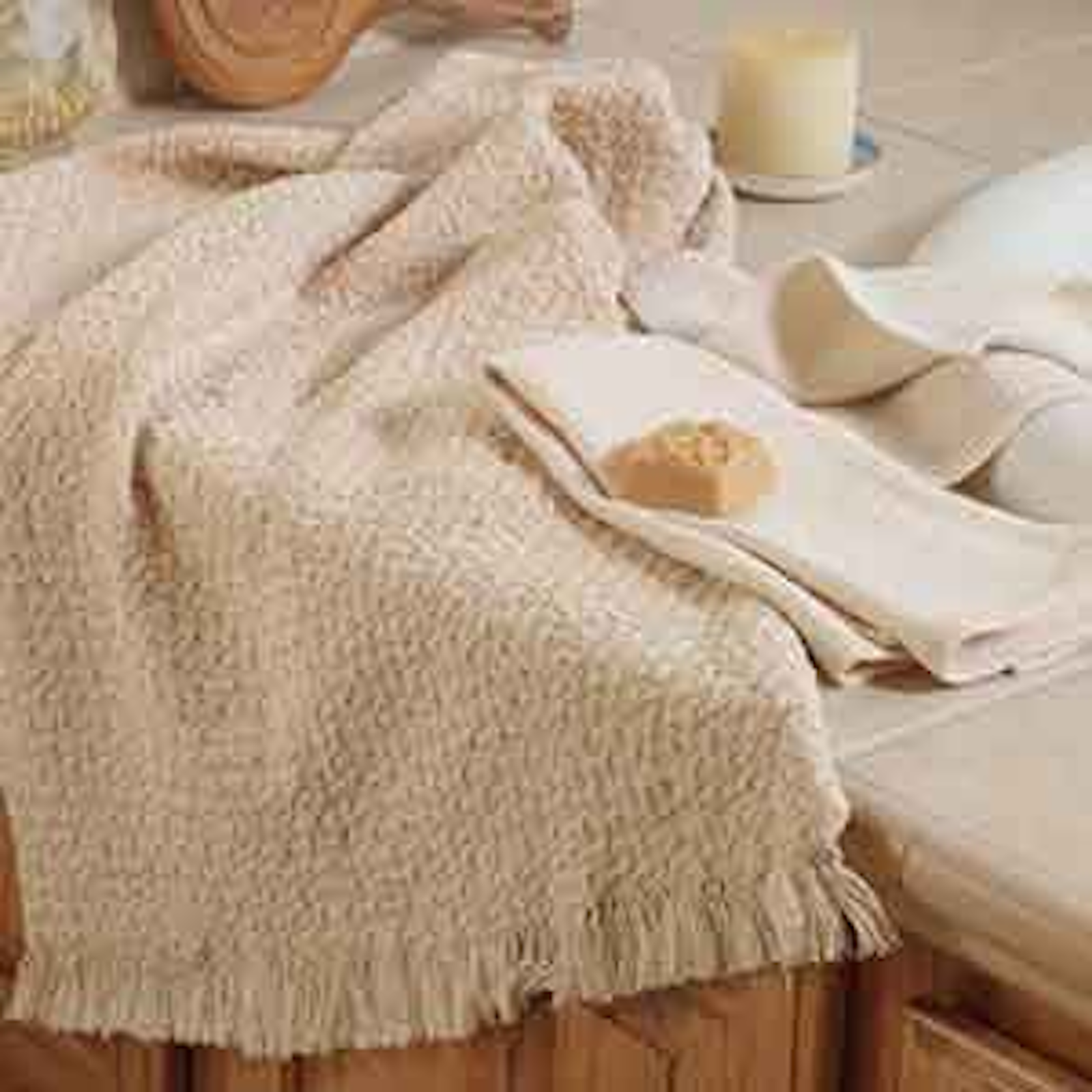I remember the first time I saw a waffle-weave fabric. It looked soooo much like a Belgian waffle! It’s interesting that in England, waffle weave is called honeycomb. No one is sure why a different name is used there, but to me, waffle weave looks just like waffles with their deep square cells, and honeycomb reminds me of the actual honeycomb made by bees, with its more rounded cells. Both structures are extremely appealing to weavers, defying the usual flat surface of most woven cloth. Because of their dimensional cells, waffle-weave fabrics are uniquely absorbent (for towels and wash cloths) and highly insulating (for jackets, vests, blankets, and throws).
 | |
| Blanket by Terry Collard. |
In addition to the projects, Kathryn Wertenberger Meile, in "Waffle-Weave Handbook,” gives a comprehensive explanation about how waffle weave works plus thirteen different waffle-weave drafts (on four, five, seven, eight, ten, twelve, and sixteen shafts). With this handbook, you can take the yarns and/or color arrangements from any of the projects in the book while shifting the draft to the number of shafts on your loom. Rigid-heddle weavers will especially love discovering how easy it is to do waffle weave on a rigid-heddle loom.
 | |
| Rigid-heddle waffle weave by Katie Meek. |
The projects in this eBook include three bath sets of wash cloths and towels (by Sharon Alderman, Karen Tenney, and Margaretha Essen-Hedin), kitchen towels (by Connie Westbrook), table pieces (runners and placemats by Hector Jaeger and placemats and coasters by Joan Torgow), a blanket and throw (by Hector Jaeger and Terry Collard, and a top and two jackets (by Betty Davenport, Teresa Kennard, and Becky Menlove).
If you’ve never woven waffle-weave before, you’re in for a lovely treat. It’s easy to warp and quick to weave, and there is nothing quite like releasing the tension and watching the waffle cells deepen as the threads relax.
Happy Weaving!
Madelyn

